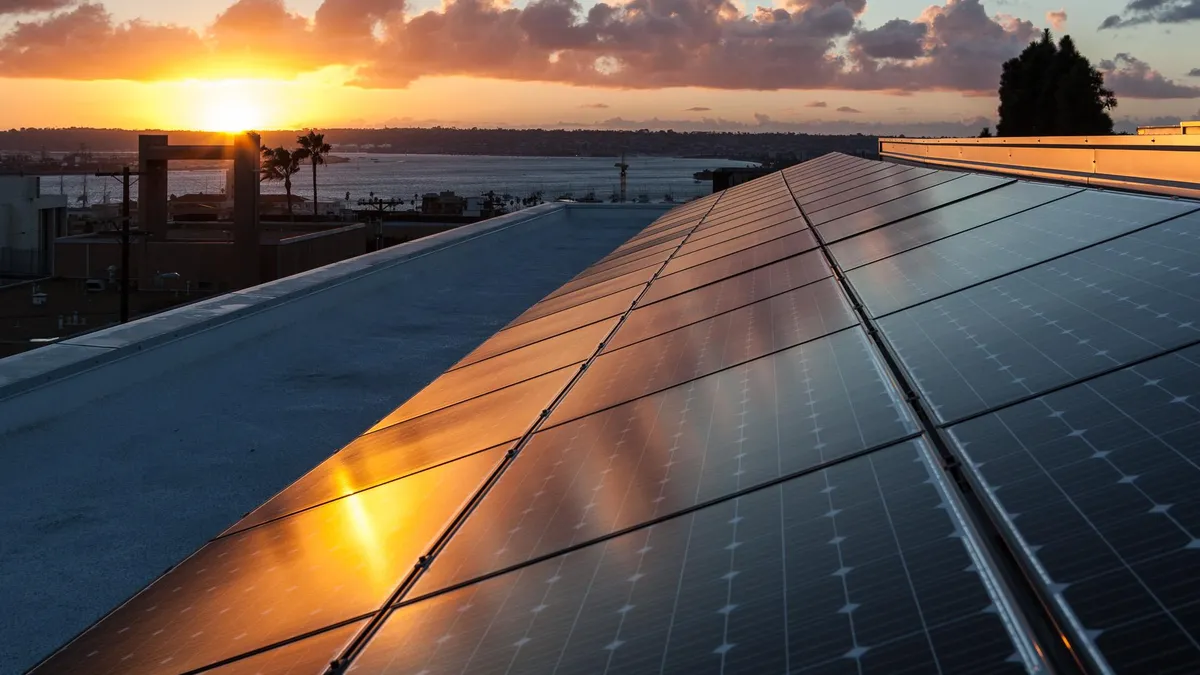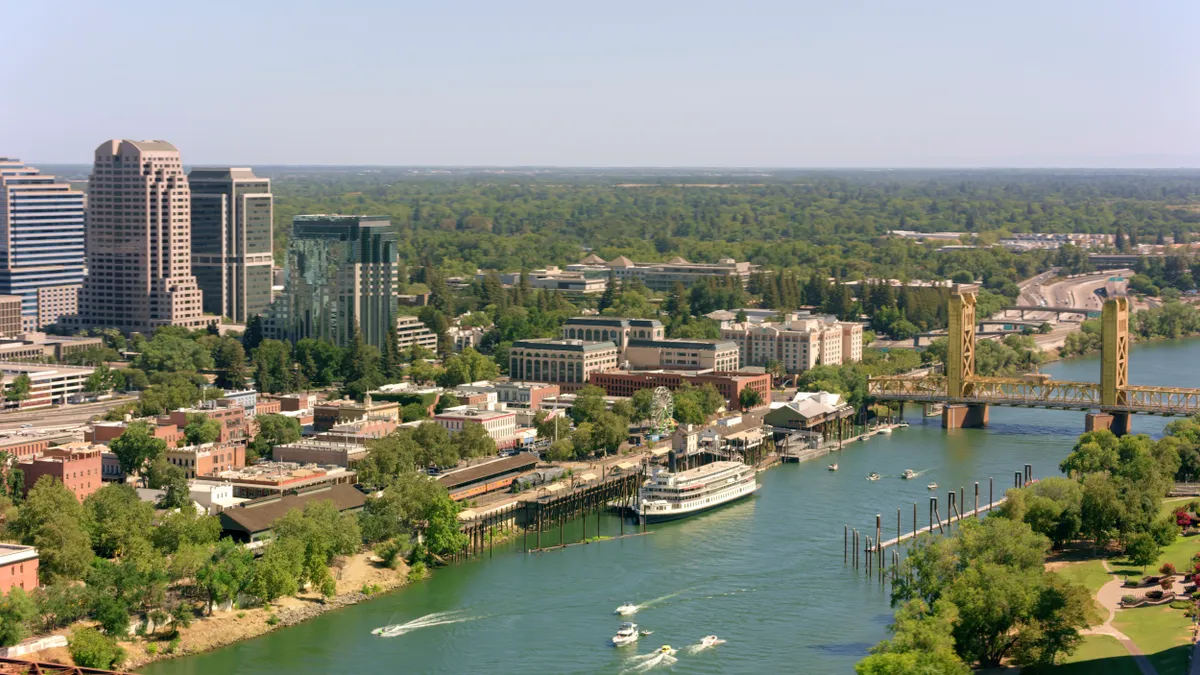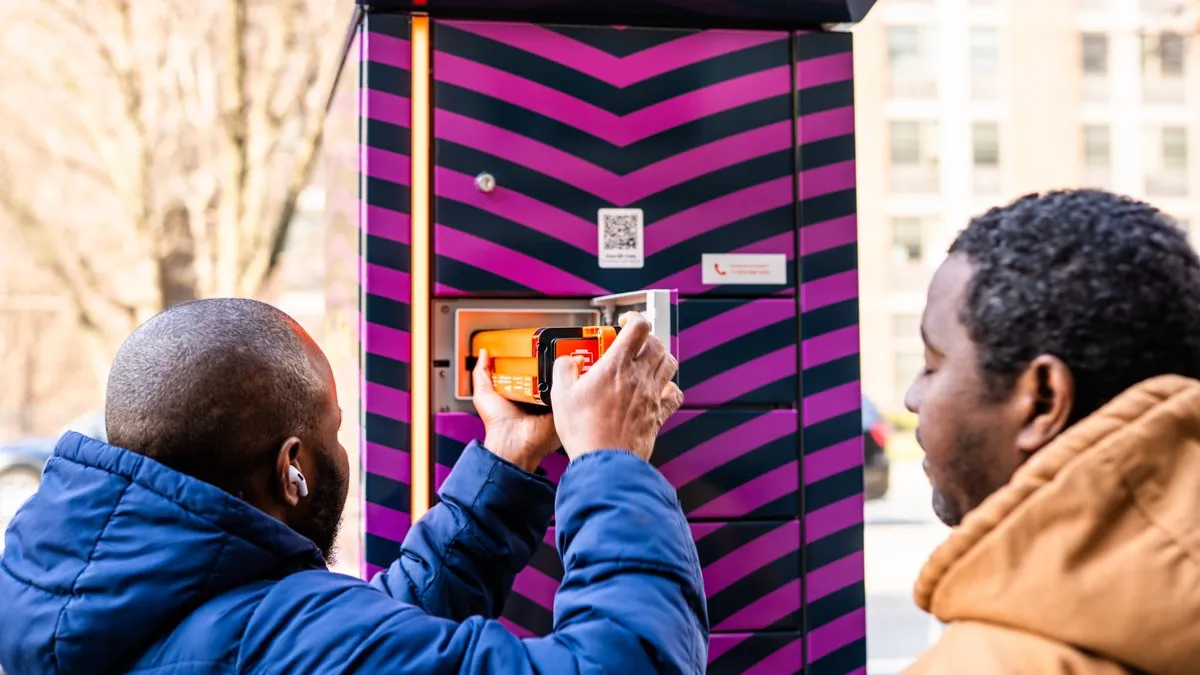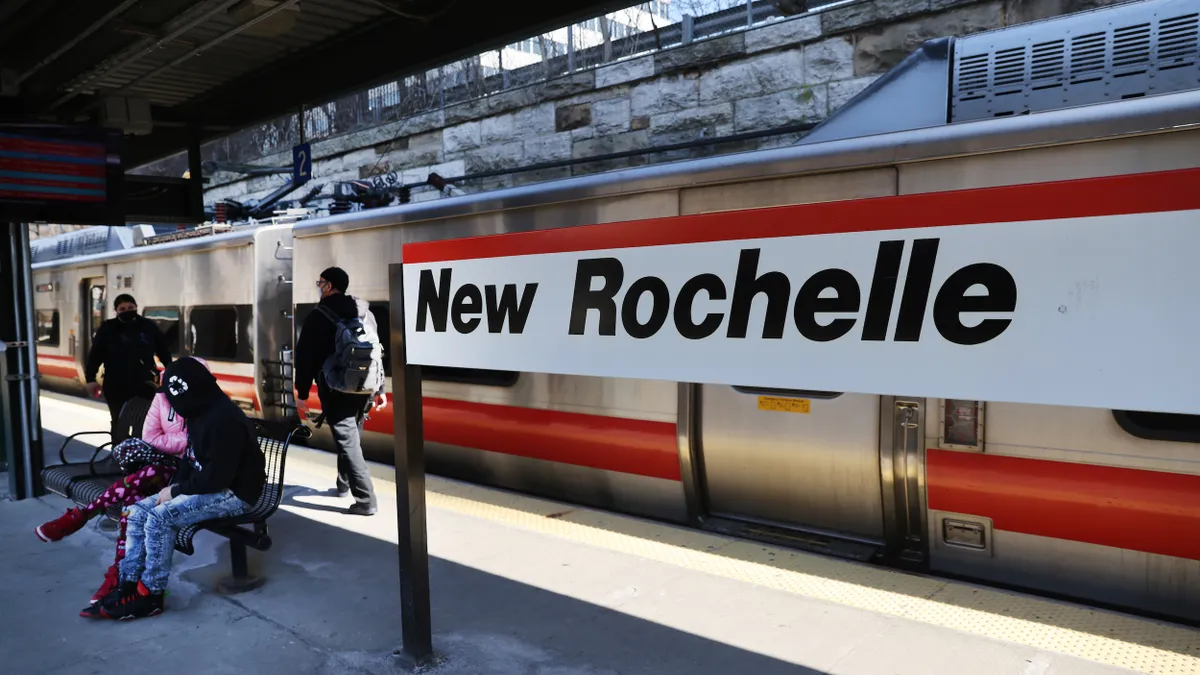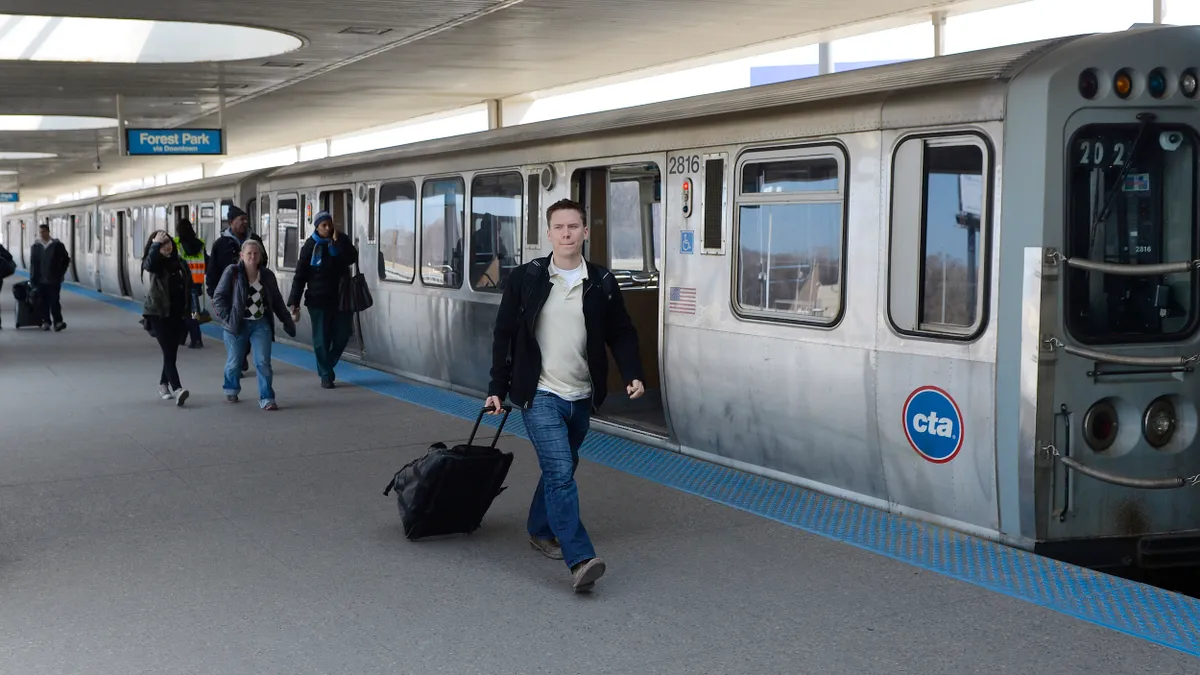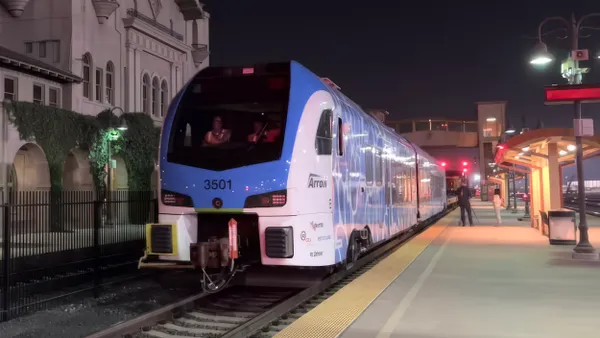This month, three senators introduced legislation that lays out how the United States can kick its fossil fuel habit by 2050. The bill also calls for half of all electricity in the U.S. to be generated by renewable sources by 2030.
Senators Jeff Merkey (D-Ore.), Bernie Sanders (I-Vt.) and Edward J. Markey (D-Mass.) are behind the “100 by 50” bill, which would also create new federal mandates requiring vehicles in the United States to release no carbon emissions and bar federal approval of oil and gas pipelines in the country. The legislation would provide job training for low-income Americans, including those in coal communities, to work in the renewable energy sector.
The bill has virtually no chance of passing in the Republican-led Congress and flies in the face of current federal policymaking. Since entering office, President Trump has moved to weaken environmental regulations on the energy sector and initiated a Department of Energy review on whether the feds should intervene to save struggling coal plants.
America's urban centers, however, are increasingly bucking that trend, passing their own clean energy measures in the absence of federal climate action.
Most recently, Portland, Ore., and its county of Multnomah County pledged to reach 100% renewable energy economywide by 2050 — including the transport and industrial sectors.
Portland became the first city in the U.S. to adopt a carbon reduction strategy in 1993. Per capita, carbon emissions have since dropped 40% and overall emissions are 21% below 1990 levels. Portland’s renewable goals went further in 2009, when they put out their Climate Action Plan with a goal of reducing carbon emissions 80% from 1990 levels by 2050.
The latest goal has the city planning to turn their city fleet of cars into electric vehicles. The Portland Building, where more than 1,000 city employees work, will be upgraded to meet LEED Gold status and reduce energy use by 20%. The Multnomah County Courthouse and Health Department now under construction will also be LEED Gold-certified and will likely operating with 40% to 50% less energy than similar facilities.
“It’s important that decision makers and everyone in the community recognizes that this is good for climate policy but it also do a lot of good in the community generally,” said Michael Armstrong, the Senior Sustainability Manager for the City of Portland’s Bureau of Planning and Sustainability, where he manages the city’s climate protection strategy.
Work with residents and businesses are planned, too. Nike, based in Portland, already declared they will go 100% renewable electricity by 2025. A law passed by city council will make home sellers get an home energy scores, so buyers can compare energy performances.
“It is new information in the marketplace, we think is a really powerful incentive,” Armstrong said.
Beyond Portland and Multnomah County, Oregon Gov. Kate Brown (D) signed a law last year that increases the state's renewable portfolio standard to 50% by 2040 while also requiring the larger utilities to phase out coal generation imports by 2035.
Armstrong said that some technology costs, like grid upgrades that can handle two-way power flows, will need to come down to help the city get to their goal. Their utility, Portland General Electric have stated they are working with the city and county to increase renewables, but are in the midst of trying to build two new fracked gas plants.
“We do have the technology,” Armstrong said “It’s a question of investing in clean technology versus dirty technology.”
Renewable cities around the country
Last year, the Sierra Club started the "Ready for 100" campaign to encourage cities to switch to 100% renewable energy sources. More than 25 cities have already made a commitment to up their renewable energy. For Chicago, they're shooting for supplying city-owned buildings with renewable energy, a goal Las Vegas hit last year. In other cities, like Boulder, San Diego and San Francisco, 100% renewable electricity for the whole city is the goal.
“There is a whole range of different innovations happening,” said Eric Woods, smart cities research director at Navigant Research.
Woods and Navigant uses the term “energy cloud” to describe the whole transformation taking place in the energy sector. A lot of different systems are part of that innovation. Smart grids, big data business models, new types of finances to transport companies are all part of the changes happening.
“Out of that complex interactions we see a new ecosystem,” Woods said. “The ones that are pushing the way in this, like Copenhagen or San Diego, they’re looking at the broad mix.”
The benefits to switching to all renewable energy could be extensive. Beyond energy independence, a study out of Stanford found that the transition to clean energy would save the average American family over $200 a year in energy costs and $1,500 a year in healthcare costs. A study published by the Environmental Defense Fund's (EDF) Climate Corps program found that the solar and wind industries are each creating jobs at a rate 12 times faster than that of the rest of the U.S. economy.
Even with all the new innovation, different projects are on different time scales. Big cities are going to take time to retrofit and upgrade. Other places don’t have total control to do projects. The United Kingdom has a national grid, which prevents towns and cities from developing their own plans. Problems like this will take time to solve.
“There’s a recognition this all won’t happen tomorrow,” Woods said.
San Diego
San Diego is the largest city — at 1.4 million residents — to make a pledge of 100% renewable electricity. What’s more, the city council in a unanimous vote made their pledge legally-binding, one of the few cities to go that far. Under the ordinance, it has also committed to completing its transition and cutting its greenhouse gas emissions in half by 2035.
While theoretically any city could be sued for not meeting stated goals, San Diego decided to go for extra accountability.
"We gave those folks a stronger argument since we made it legally binding,” said Cody Hooven, who leads sustainability planning and policy for San Diego.
The plan goes along with their climate change action plan. The projects include switching city cars to electric vehicles. Less traditional projects are in the works, like looking into harnessing hydropower from dams to capturing methane from trash to power garbage trucks.
“We’re making a good faith effort,” Hooven said. She added that they are doing reports on the city’s progress every year, when most cities do these types of reports every two to three years.
The plan passed with support from San Diego’s Republican mayor and the local Chamber of Commerce, something Hooven said was easy when the benefits were laid out.
“Economic growth and environmental protection didn’t have to be pitted against each other,” Hooven said, reframing a popular talking point from President Trump's fossil-friendly EPA chief.
The city’s power supplier, San Diego Gas & Electric (SDG&E), already uses renewable energy for 33% of the city’s power. But SDG&E said in a statement that they are committed to 50% renewable energy by 2030, which is not quite the 100% by 2035 goal the city has.
There is a way the city could force the issue. In California, a program called community choice aggregation would allow San Diego to purchase power independently of SDG&E, while the utility would still maintain the grid.
That option has been exercised in smaller places in California like Napa County but haven’t been done yet in larger cities like San Diego. Hooven said that there is still time for SDG&E to get on board with the city's goals, but the utility opposes efforts to move to community choice aggregation.
"We will have to work in partnership with them," Hooven said.
The first city to go 100%
Burlington, Vermont, home of Bernie Sanders, Ben and Jerry’s and 42,000 other residents, was the first city in the country to go 100% renewable energy.
After deciding to phase out nuclear in the 1990s, the city resolved to go for 100% renewable energy. In 2014, the city reached its 100% target and now runs mostly on a mix of biomass, wind, solar, hydropower and methane. The city can still buy traditional power if the renewable sources aren’t producing enough energy, but the city typically produces enough extra green power that they can sell excess renewable energy credits to companies.
While switching to renewables the city also put in place an energy efficiency program. Burlington now actually uses less energy, about 4% less, now than it did in 1989. By comparison, Vermont's energy consumption went up 10.5% and the U.S. went up 28% over the same time period.
“Burlington is obviously a vibrant city with strong economic growth, but we have been able to lower demand for energy,” said Darren Springer, Burlington Electric’s Chief Operating Officer.
Burlington Electric bought Winooski One, a hydroelectric facility to get them to the 100% line, a power source controversial with some environmental activists because of the ecological damage that dams can do. Winooski One is a certified low-impact hydro dam, however, a designation that means the project has minimal environmental and social impacts.
“Hydropower can be a baseload-style resource and it helps diversify the mix,” Springer said. While wind and solar only generate power during certain hours, hydropower can provide electricity around the clock.
The Burlington Electric Department is controlled by the city, making working on these shifts easier than in some other communities. Since going 100% renewable, cities around the world have contacted Burlington for insight. Cities like Aspen have since also achieved 100% renewable electricity.
For the Vermont city, reaching their goal just made them want more. Ideas include becoming a net-zero energy city, which means it must generates as much energy as it consumes, and not just electricity, but heat and transportation as well. They are also working on an electric bus to replace diesel ones.
“There’s been a lot of positive interest,” Springer said. “Beyond interest, it inspired some thinking in Burlington into what comes next.”


